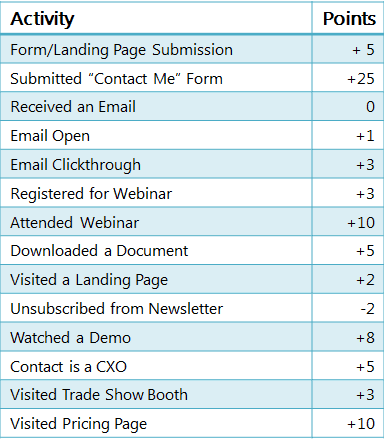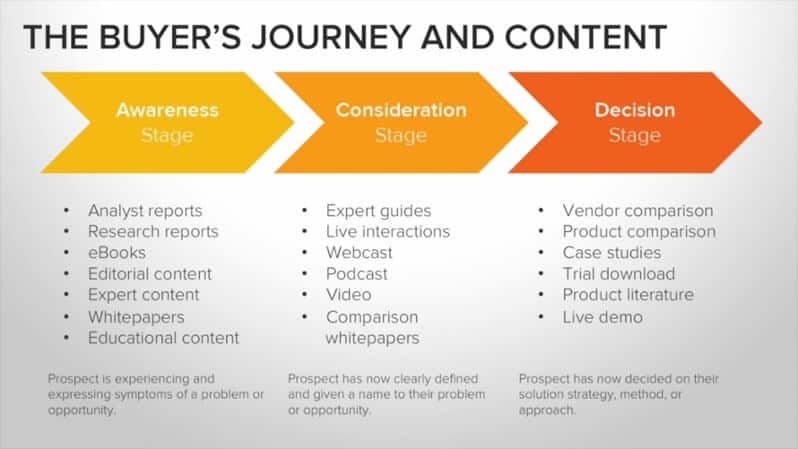How many salespeople have ever said, “Our marketing is so amazing – they send us so many qualified leads that we don’t know where to turn!
Probably not many… The most common reaction is something like: “Marketing is useless – we generate all the real leads…”.
Indeed, leads, as such, are not worth much. To be commercially interesting, they must meet certain criteria, have expressed a real need, be ready to buy, have the right budget… For almost fifteen years now, Marketing Automation editors have been offering their users “Lead Scoring” functions that are supposed to represent the magic technique for detecting qualified leads.
But while lead scoring is widely used by companies (especially in B2B), the results have been mixed so far. A study by SiriusDecisions found that 68% of companies using marketing automation systems were doing lead scoring, but only 40% of salespeople saw any value in it.
Lead Scoring as it is practiced today is, overall, bad. Why is the lead scoring system you use probably useless? What are the alternative approaches to lead scoring to better qualify leads and improve marketing performance? If you are interested in these questions and the answers, this article is for you. We will present 6 strategies to generate qualified leads without using lead scoring.
Sommaire
Why is your lead scoring system probably useless?
Lead Scoring, because it is worth recalling what it is all about, is a methodology associated with technologies that enable prospects to be classified according to their perceived value to the company. Each lead is given a score, which takes into account several criteria defined in advance by the company. Lead scoring allows the identification of leads to be contacted in order of priority.

Marketing automation vendors all claim that Lead Scoring can generate revenue faster by focusing on the most interesting leads. The expected result is threefold:
- Avoid salespeople wasting time on leads that have a very low probability of conversion.
- Better manage the commercial pressure on new buyers.
- To enable marketers to better understand their audience.
Except that the reality is less rosy than the theory. One of the biggest obstacles in lead scoring is the choice of criteria and their weighting. One of the main challenges of lead scoring is to determine the right scores to assign to leads, based on their behaviour and socio-demographic (or firmographic, in B2B) characteristics. You need to set up a relevant attribution model (the choice of criteria and their weighting), which requires good statistical skills. Except that, in reality, it is the marketers themselves who do this work. The models are built on instinct, a dose of chance and assumptions that are not always well founded…
In order to implement a lead scoring process, it is essential that the marketing and sales departments both agree on the criteria for qualifying leads. What makes a lead qualified, or increasingly qualified? What demographic criteria? What behaviours? What actions? What events? The criteria are then compiled into a scoring matrix, as in this example:

Each criterion is weighted. Without the assistance of a statistician worthy of the name, or someone experienced in multivariate linear regression techniques, it is difficult to see how a marketer can identify the criteria alone, let alone find the right weights. To build a relevant lead scoring model, one should be able to base the criteria not on assumptions or intuitions, but on data.
Some would argue that the Lead Scoring model can be refined over time, adjusted as it goes along to become more and more relevant and effective. Practice and time would lead to a model that makes sense. Except that in reality, marketers are often very busy, between launching new campaigns, producing content, etc. Few of them have or take the time to do so. Few have or take the time to test, measure and continuously improve the lead scoring system. Especially since there are better ways to spend your time to generate qualified leads, as we will see later.
4 more reasons to drop lead scoring
If you are not convinced by the major weaknesses of current lead scoring techniques, here are 4 more reasons that will surely help tip the scales in your mind.
Firstly, in theory, Lead Scoring models should be updated continuously, according to new data collected or new behaviours observed. However, technically, this is not possible because it is far too time-consuming. You can’t just keep redesigning everything. This is one of the reasons why more and more companies – especially companies that are constantly evolving – are deciding to give up on lead scoring.
Secondly, producing good demographic and firmographic scoring requires a lot of data. Best-of-breed vendors have developed platforms to scrape, acquire and compile large proprietary databases. This allows users of these technologies to enrich the data on their contacts. But if you use a manual lead scoring technique, it is impossible to manage the volume of data needed to obtain a statistically relevant score.
The third reason is that classic (manual) lead scoring techniques are only based on data collected by the company. This means missing out on all the other data that could be used to qualify the purchase intention of your contacts (technologies used, maturity of the organisation, etc.).
Fourth and last reason: contact-based lead scoring is problematic in B2B, because decisions are taken by several company representatives, after internal discussions and negotiations that scoring does not take into account but which often play a crucial role. This does not apply to very small companies (less than 25 employees), which is the only case in B2B where contact-based scoring can really be justified.
For all these reasons, classic lead scoring is problematic. Fortunately, there are alternatives to scoring that allow you to qualify leads and move them through the conversion funnel. After all, the goal is to turn as many leads as possible into paying customers, right? Here are 5 ways to generate more qualified leads without lead scoring.
Discover 20 high potential lead generation techniques.
Strategy #1: Set up a lead nurturing system
Rather than using a lead scoring system to generate SQL based on more or less arbitrary criteria, work on the customer journey (or rather the prospect journey) and optimise it from a lead nurturing perspective in such a way as to encourage prospects to contact the sales team as much as possible – through trial registration, for example. It’s not as complicated as it sounds. You should look to target individuals who have shown some form of interest in your company or products. For example, participants in your webinars, people who have downloaded ebooks, subscribers to your newsletter, etc. These are by definition individuals who are more likely to convert than others.
When talking to new prospects or leads, good sales people are always on the lookout for things that indicate a desire to buy or events that help to activate and develop it. This can be anything. For example, the launch of a new product or a new campaign, a company that has to implement new tools (e.g. RGPD) due to an imminent legal change, etc. Lead Nurturing is the process of identifying these individuals in the first instance and moving them along the buying journey by means of specific actions and in particular by encouraging them to contact the sales team. The identification of these individuals is not done via lead scoring, but in a manual way, based on events carried out by the leads (prospects) or information you have on them.
Using this approach, your list of qualified leads will probably be smaller, but it is not the size that matters. A lead, as we have seen, is not worth anything in itself. Your goal is to increase your number of customers, not your list of prospects. With this technique, you will no longer spend your time trying to qualify leads that will never convert.
Strategy #2: Deliver engaging content to develop your target audience’s interest and move your leads along the buying journey
Your content must be engaging and of high quality. This is the best way to attract qualified leads, but also to build a reputation as an expert with prospects who are not ready to buy but will be one day. Let’s take an example. Let’s imagine a manager working in a customer service department. Let’s say he intends to implement new customer relationship management software next year. When the day comes, he is more likely to turn to a publisher who has published content such as “5 techniques to optimise your contact centre performance”, “Customer service: how to deliver a perfect customer experience” or “7 tips to effectively drive customer satisfaction in your customer service department” than to publishers who have bombarded him with messages inviting him to contact them. Or to those who have simply disappeared from the radar.
Find out how to set up and promote webinars to generate more leads.
You need to create stimulating content to develop your target’s interest. The content most likely to do this is content that addresses your target’s needs at each stage of the buying journey. We advise you to speed up or slow down the sharing of content depending on the level of responsiveness of the readers. But also to create content in phase with the different stages of the buying process. We can distinguish 3 main stages:
- Awareness. The person has become aware of a need but is not yet able to clearly identify it. They are looking for information rather than specific solutions. At this stage, the idea is to share content on general topics, not to promote a particular solution. For example: “How to increase your website traffic”, “How to successfully develop your ecommerce business”, “How to gain visibility on the internet”, “How to collect more leads via the internet”, etc. “etc.
- Consideration. The individual has defined the problem he/she is facing. He/she can name it and can start to find solutions to it. The idea is for you to help them identify and compare the different possible solutions. For example: “The complete guide to natural referencing (SEO)”, “How to create and run a blog on your website”, “5 tips for a successful inbound marketing strategy”, etc.
- Decision. The person is clear about what they want. Now they have to make a decision, they are ready to buy.
Each stage of the journey has different formats and types of content:

One of the keys to success is to offer the right content to the right people; to vary the volume and type of content shared according to lead behaviour. Editorial is one of the main areas to develop in a lead acquisition and nurturing strategy.
Discover the best tools for generating leads from LinkedIn.
Strategy #3: Collect “qualifying” lead information from the start
In order to adapt your communication and your strategy to the leads, you need to collect information from the outset to identify the leads, their characteristics and their attributes. On your landing page forms, for example, don’t hesitate to ask for information other than email. If you only ask for email, you won’t have any information about the leads collected (email is a contact channel, not information).
The type of information to be collected depends to a large extent on the company’s business, the type of products sold, the sector… This information will be used to segment your leads and to personalise your dialogue and offers.
Discover our complete guide on lead qualification by marketing or sales teams (MQL VS SQL).
Strategy #4: Engage with “hot leads” instantly, using triggers
When a lead performs an action or an event that you have defined as important, you need to trigger relational/marketing actions on your side as soon as possible. To have an optimal level of reactivity, nothing beats the use of Marketing Automation tools. These tools allow you to automatically trigger campaigns and messages according to precise triggers. For example: subscribing to a newsletter, subscribing to an offer, clicking on a link, exceeding a certain value threshold, etc. Reactivity is a key factor in marketing performance. Marketing Automation allows you to immediately engage leads that are deemed “hot” or “ready” based on their behaviour or actions.
Discover 40+ powerful email subject lines that are essential for successful email marketing.
Strategy #5: Use predictive lead scoring techniques to target contacts with high buying potential
While traditional lead scoring does not always deliver on its promise, predictive scoring can be very effective. Predictive scoring platforms such as Infer, Lattice or MixPanel Predic fulfil in a sense the original promise of lead scoring, i.e. to automatically identify signals that indicate a high probability of conversion and use these to rank the leads in your database. Scoring platforms play the role of statistician that marketers who do traditional scoring miss. The technologies built into these tools are usually based on machine learning algorithms. Thousands of signals are crunched per second, such as web activity, third party data, in-app behaviour of your users, demographic information, engagement level to determine the impact of each variable on conversion. Based on historical data, these tools are able to predict the behaviour of each lead in a probabilistic way. As a result of machine learning, predictive models are constantly being refined over time.
Most of the techniques proposed in this article (whether it is inbound marketing, marketing automation scenarios, collecting information from the first form, etc.) are simple to implement and can give quick results. They have two things in common: 1/ none of them are based on lead scoring and 2/ these techniques generate much higher quality leads.






